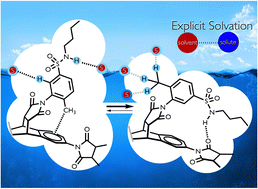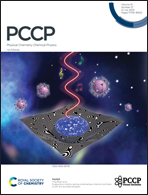Rationalizing hydrogen bond solvation with Kamlet–Taft LSER and molecular torsion balances†
Abstract
The strength of a weak intramolecular hydrogen bond was quantified using molecular torsion balances and found to vary between −0.99 kcal mol−1 and +1.00 kcal mol−1 due to solvation. Analyzing the results using Kamlet–Taft's Linear Solvation Energy Relationship enabled partitioning of the hydrogen-bond strength into physically meaningful solvent parameters through a linear equation: ΔGH-Bond = −1.37 − 0.14α + 2.10β + 0.74(π* − 0.38δ) kcal mol−1 (R2 = 0.99, n = 14), where α and β represent the solvent hydrogen-bond acceptor and donor parameters, respectively, and π* associates with the solvent nonspecific polarity/dipolarity parameter. Based on the coefficient of each solvent parameter (derived by linear regression), the β electrostatic term emerged as the dominant contributor to solvent effects on hydrogen bonding. This finding aligns with the natural attributes of hydrogen bonds as electrostatic interactions, but the contributions from the nonspecific interactions of the solvent (e.g., dispersion) are also important. Hydrogen bond solvation affects molecular properties and functions, and this study provides a predictive tool to harness the efficiency of hydrogen bonds.



 Please wait while we load your content...
Please wait while we load your content...